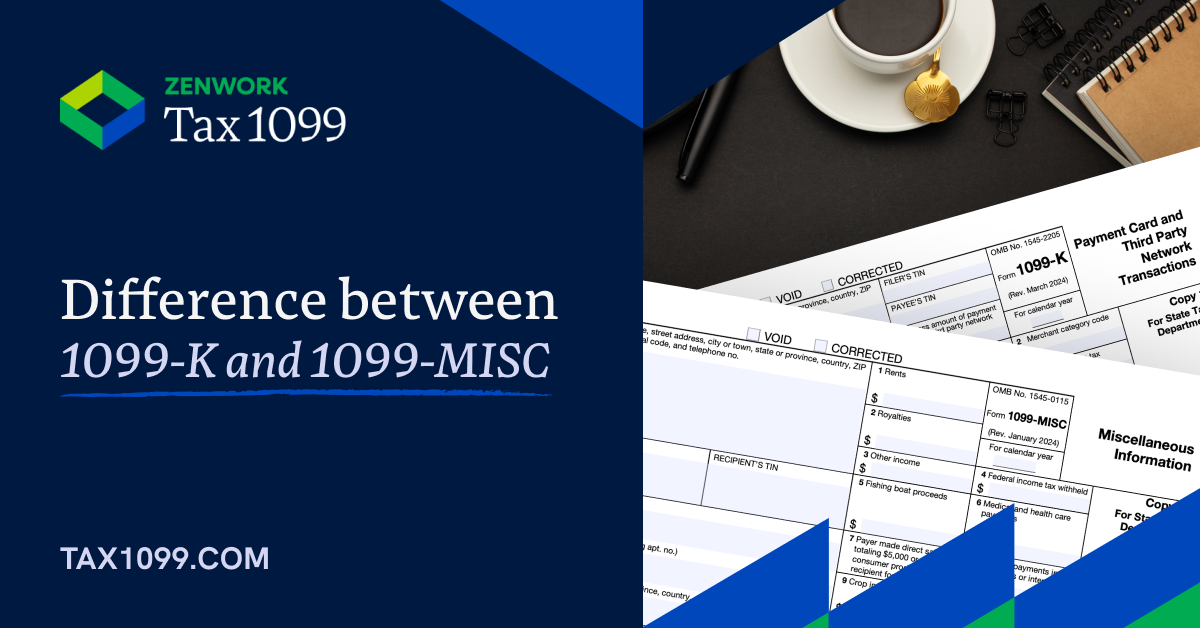Not all income is created equal—especially when it comes to tax reporting. Whether you’re getting paid through a payment app or receiving rent and royalties, understanding the difference between 1099-K and 1099-MISC can save you from tax season surprises!
Both Form 1099-K and Form 1099-MISC are IRS forms used to report income, but they serve different purposes and apply to distinct types of payments.
Let’s uncover the difference one-by-one.
Purpose of Forms
- 1099-K:
- Reports payment card transactions (credit/debit cards) and third-party network transactions (e.g., PayPal, Venmo, Stripe).
- Used for businesses or individuals receiving payments through payment processors or online marketplaces.
- 1099-MISC:
- Reports miscellaneous income such as rent, royalties, awards, legal settlements, and other non-employee payments not related to card or network transactions.
- Typically used for direct payments from businesses to service providers.
Who Receives It?
- 1099-K:
-
- Businesses or individuals receiving $600 or more in payments via third-party processors (effective from 2024).
-
- Previously, the threshold was $20,000 and 200 transactions, but recent changes lowered it.
- 1099-MISC:
- Individuals, freelancers, and businesses earning $600 or more in non-employee compensation or other forms of reportable income.
Who needs to file it?
- 1099-K:
-
- Payment card companies, payment apps and online marketplaces are required to fill out Form 1099-K and send it to the IRS each year.
- 1099-MISC:
- If your business has made miscellaneous payments amounting to at least $600 or more, then you must report such payments to the IRS by filing Form 1099-MISC.
Key Reporting Fields
- 1099-K:
-
- Reports gross payment volume processed through third-party payment networks.
-
- Includes transaction amounts but does not deduct fees or refunds.
- 1099-MISC:
-
- Reports specific types of income (e.g., rent in Box 1, royalties in Box 2, legal settlements in Box 3).
-
- Tracks various non-employment-related income streams.
Filing Deadlines
- 1099-K:
-
- Recipient Copy: January 31.
-
- IRS Filing (Paper): February 28.
-
- IRS Filing (E-file): March 31.
- 1099-MISC:
-
- Recipient Copy: January 31.
-
- IRS Filing (Paper): February 28.
-
- IRS Filing (E-file): March 31.
Common Use Cases
- 1099-K:
-
- Payments through online platforms like PayPal, Etsy, Amazon, Stripe, and Square.
-
- Used for e-commerce, gig economy work, and online sales.
- 1099-MISC:
-
- Payments for rent, prizes, awards, attorney fees, or royalties.
-
- Common for landlords, authors, and vendors.
Note: It’s crucial to keep in mind that personal payments, such as gifts received for birthdays or sharing rent with a roommate, are not considered taxable income. Therefore, these types of payments should not be reported on Form 1099-K or 1099-MISC.
How to File 1099 Forms for TY 2024 with Tax1099?
Tax1099 is authorized by the IRS to help business taxpayers with informational returns. Follow these steps to file your 1099s directly to the IRS.
- Import Payee Data: Quickly gather your payee transaction data using integrations.
You can even use Tax1099 API to save time on manual data entry.
- Verify TIN and Data: Check the accuracy of your 1099-K form data. Ensure your transaction details match what’s on Form 1099-K.
Correct any errors, including incorrect TINs or payee names.
- eFile Form 1099: After reviewing and confirming your reports, simply click ‘eFile’ to transmit your returns directly to the IRS instantly.



